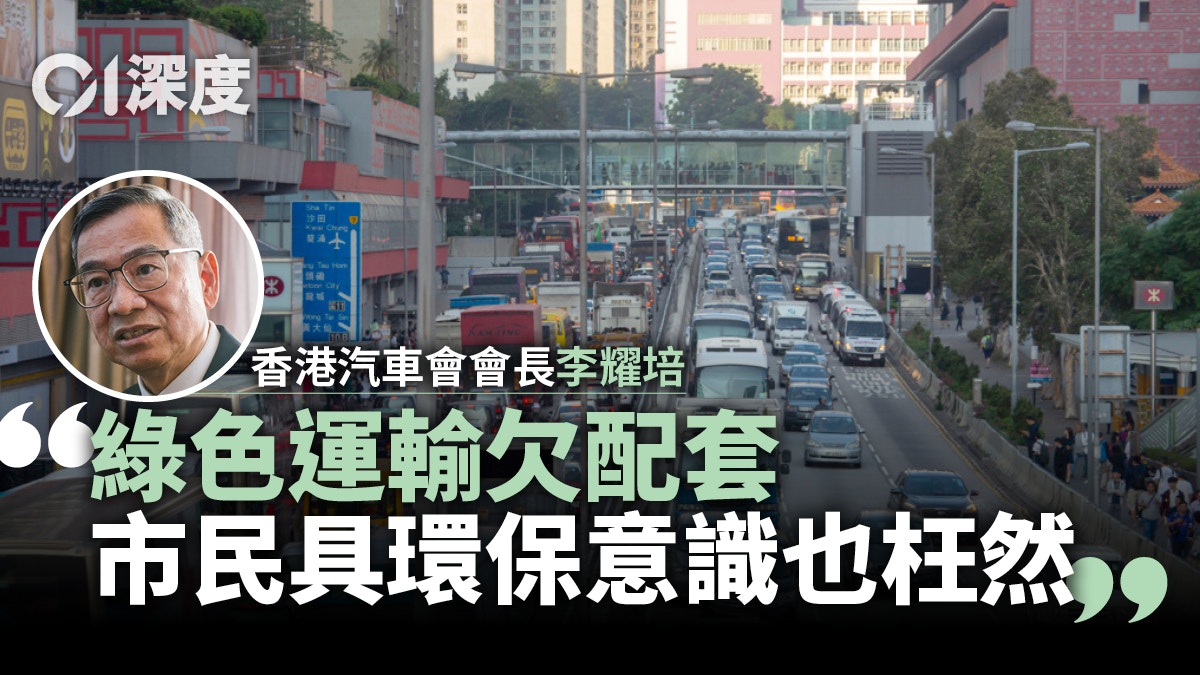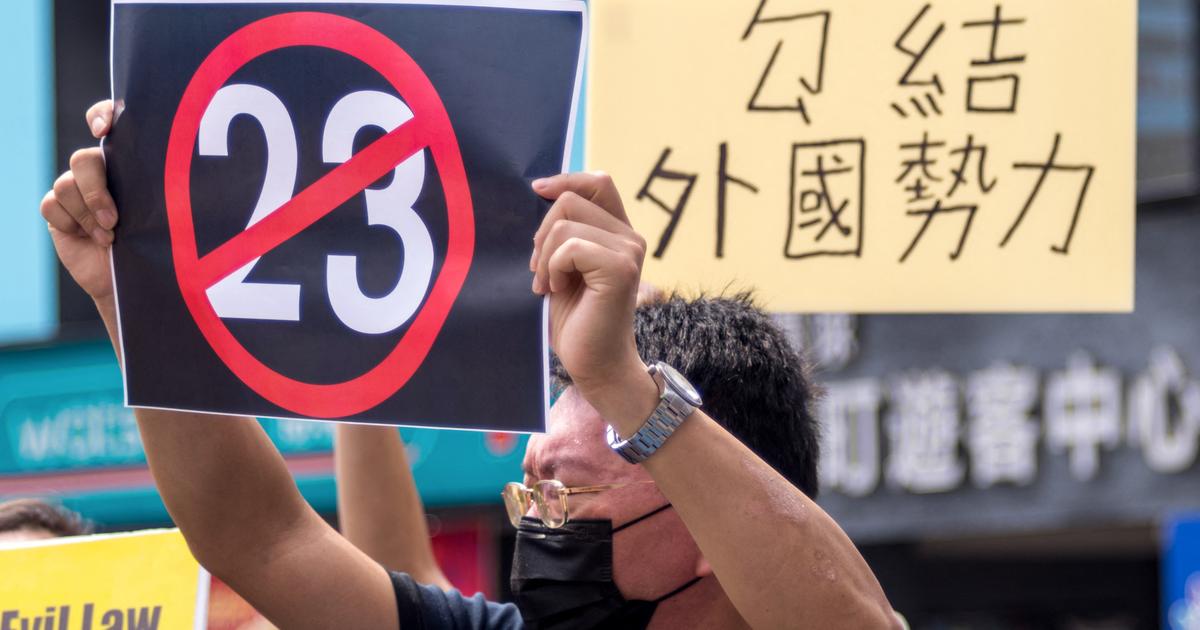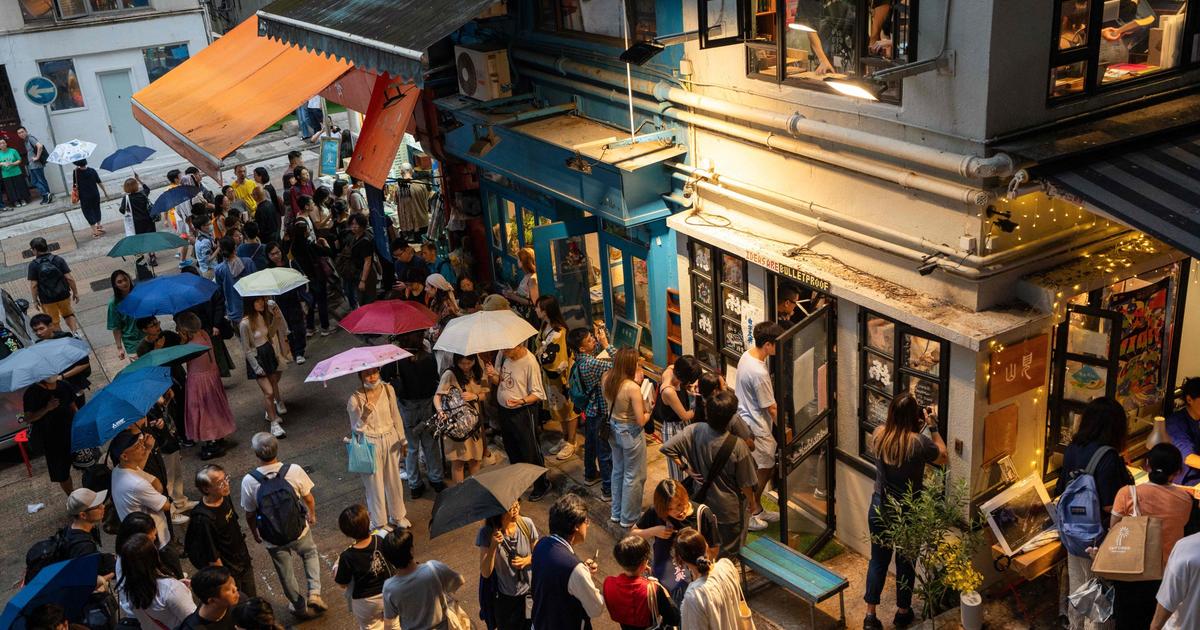The SAR government earlier proposed that it strive to achieve carbon neutrality by 2050.
In order to achieve the goal, the government will strive to reduce carbon emissions so that carbon dioxide or greenhouse gas emissions are relatively zero.
According to data, the second largest source of greenhouse gas emissions in Hong Kong in 2018 was the transportation sector, which accounted for 18.1% of the overall emissions. Therefore, the development of green transportation is very important to achieve carbon neutrality.
Li Yaopei, president of the Hong Kong Automobile Association, said in an interview with "Hong Kong 01" a few days ago that public transportation is the main source of polluting gas emissions, and the government should focus on popularizing electricity or new energy as the main driving force of public transportation to make it low-carbon.
However, the government has not provided sufficient economic incentives to implement the measures, and there are also problems such as lack of foresight in the popularization of private electric vehicles, which has led to numerous obstacles to the development of green transportation.
There are many obstacles to the development of green transportation in Hong Kong.
(Data Picture/Photo by Gao Zhongming)
Commercial vehicle emissions by more than ninety percent
government owes a strong economic incentive to reduce emissions
Li Yaopei believes that the government should start with public transportation, provide economic incentives to enterprises, and promote low-carbon transportation of various public transportation vehicles. However, the current government's financial investment in "green transportation" is not enough.
Even though private cars account for 70% of the consumption, data shows that low-carbon public transportation is indeed the key to the development of green transportation.
The Environmental Protection Department announced the results of Hong Kong's air quality monitoring in 2019. It pointed out that although commercial vehicles such as trucks, buses, light buses and taxis only accounted for about 20% of the total number of vehicles, they accounted for 90% of the nitrogen dioxide emissions of all vehicles in Hong Kong. The above are the main sources of nitrogen dioxide emissions on the roadside.
In Hong Kong, roadside nitrogen dioxide is still at a relatively high level. Therefore, commercial vehicles should still be the government's focus on improving roadside air quality.
"Commercial vehicles are still using fuel, and buses run in densely populated places, especially when they stop at platforms waiting for passengers to get on and off, they emit a lot of exhaust gas, which in turn causes serious pollution." Li Yaopei pointed out that most citizens travel by taking them. For subways and buses, the government should actively develop some super charging facilities for heavy vehicles. Some large heavy vehicles need to consider using low-carbon new energy such as hydrogen and natural gas.
Li Yaopei used Shenzhen as an example. The number of electric buses in Shenzhen is about 16,000, which has almost fully realized the electrification of public buses; and there are more than 22,000 electric taxis.
The cost of electric vehicles is more expensive than ordinary vehicles. For transportation companies, electrification of vehicles will increase costs and is not economically beneficial. Therefore, behind the full launch of new energy sources, the government cannot do without sufficient economic incentives.
For example, if a taxi company in Shenzhen has 300 to 400 electric vehicles, it can receive a tax reduction of 5% to 7%. The more electric vehicles the company has, the more concessions and support the government will give.
On the other hand, in Hong Kong, the economic incentives provided by the government are not comprehensive, and the implementation of the part is also weak in follow-up.
Li Yaopei believes that public finances are not enough to invest in green transportation.
For example, in last year’s "Budget", there was no special fund to test electric taxis. In the new energy transportation sector, the government allocated 80 million yuan to implement an electric light bus pilot program, but it is expected that the trial will only start in 2023; as of the end of last year , The New Energy Transportation Fund approved 154 million yuan to fund nearly 200 commercial vehicle/bus/ferry projects.
According to statistics from the Transport Department in September this year, the total number of licensed KMB franchised buses in Hong Kong has reached 3,894. From this point of view, the number of projects funded by this fund is indeed a drop in the bucket.
In addition, the Hong Kong government has not vigorously encouraged bus companies to operate electric vehicles.
"Why doesn't the government help companies implement bus replacement schedules?" Li Yaopei suggested that the government should provide body subsidies for companies to replace buses to reduce the economic burden in the early stage of electrification. After the full popularity, electricity bills will be cheaper than gas bills. Under the premise of supporting environmental protection, we can reap long-term benefits and achieve multiple wins.
The government should start with public transportation, provide economic incentives to enterprises, and promote low-carbon transportation of various public transportation vehicles (provided by NWFB and Citybus)
Lack of adequate prospective
electric vehicle a serious shortage of facilities
In March this year, the government announced the "Roadmap for the Popularization of Electric Vehicles in Hong Kong" in an effort to lead Hong Kong towards a new direction of zero-emission vehicles. It set a goal of providing at least 155,000 charging facilities by 2025 and suspending new registration by 2035. Although there are only 18,500 electric private cars in Hong Kong since the development of electric vehicles in the past 10 years, there are only 4,500 charging facilities in Hong Kong, which is seriously in short supply.
Li Yaopei pointed out sharply that the biggest obstacle to the development of electric private cars in 10 years is inconvenience and insufficient charging facilities, even if car owners are environmentally conscious.
As early as 2016, the DAB Legislative Council Member Chen Keqin asked a question. The government's goal is that 30% of private cars will be electric or hybrid vehicles by 2020. How far is the target from then? Has the authorities assessed the issue? Whether the goal can be achieved, and what new measures will be taken to achieve the goal.
The Secretary for the Environment, Wong Kam-sing, responded that the government has been waiving the first registration tax for electric vehicles, and working with the industry to expand the charging network for electric vehicles and encourage vehicle suppliers to introduce more suitable electric vehicles to promote the use of electric vehicles.
Huang Jinxing also announced that as of the end of March 2016, the number of registered electric private cars was 4,753, an increase of nearly 80 times from the 60 in 2020. He also said that with the improvement of electric vehicle technology, it is believed that the use of electric vehicles will increase in the future. universal.
However, just "believe" is not enough to actually increase the number of electric vehicles, and the number of charging piles in Hong Kong is completely insufficient to meet the needs of electric vehicle owners.
"Many car owners, including myself, are considering buying an electric car, but my residence cannot be plugged in, and I don't want to line up in front of the charging pile." Li Yaopei lamented that Hong Kong is not large in size, and urban planning is very suitable for electric cars. Basically, one electricity can be used for one week, which has inherent advantages.
However, the government lacks foresight, not only is it not equipped with sufficient infrastructure, but also has not fully exploited and utilized renewable energy. It has missed opportunities and has led to the failure to develop solar, hydro, and wind power generation energy.
In this regard, Li Yaopei proposed that the government should formulate short-, medium-, and long-term solutions for this in order to deploy green transportation.
In the short term, charging stations should be installed in government parking lots and other places to solve the urgent need for electric private car owners who have no charging points available. In the medium term, Hong Kong emphasizes efficiency, and the government can launch fast charging facilities as soon as possible. Car owners can be fully charged in half an hour or even 15 minutes. Even if the supporting facilities are difficult to keep up in a short time, they can also use commercial facilities to conveniently charge; as for the long-term plan, full coverage of charging in shopping malls, buildings and other places Pile to meet the needs of car owners.
Li Yaopei, chairman of the Hong Kong Automobile Association, dismantled the three major obstacles behind Hong Kong's green transportation, including failure to provide incentives for the public transportation industry to promote low-carbon, complete lack of supporting facilities for electric vehicles, and the use of digital games to cover up defects.
(Photo by Ou Jiale)
Numbers game to cover up defects
are not honest about the crux of the problem
The government must vigorously develop green transportation in an all-round way, and it must also face up to the shortcomings of reality, instead of playing a number game and using seemingly beautiful "proportions" to cover up the shortcomings.
The Secretary for the Environment, Huang Jinxing, released data earlier. Among the five new cars in Hong Kong this year, one is an electric vehicle, one of the top three in the world.
When asked how to view this information, Li Yaopei replied, "Outsiders may find this number very powerful," and then pointed to himself, "Insiders are just talking and laughing." He further explained that new vehicles are expected to be added this year. If there are less than 30,000, then according to the ratio of one-fifth, there are only about 6,000 new electric vehicles.
At present, the total number of private cars in Hong Kong exceeds 600,000. In contrast, the annual growth of these 6,000 is not as world-leading as Huang Jinxing said.
According to the "One-for-One" program implemented from February 2018 to March 2024, car owners who arrange to dismantle and cancel their eligible old private cars can receive a first registration tax concession when registering a new electric car, up to the upper limit It is 287,500 yuan.
Li Yaopei believes that the success of 6,000 new cars is partly due to this plan, otherwise there may be only one or two thousand new electric cars per year.
"It's just that the government is playing a number game."
Both private and public electric vehicles in Hong Kong have not fully covered the lives of citizens, and the government has neither set up a sufficient number of supporting facilities to encourage the development of the former, nor has it tried every means to stimulate enterprises to develop the latter.
In the absence of comprehensive and effective support from the authorities, it is difficult for the private sector to spontaneously promote green transportation.
Li Yaopei also mentioned that in May of this year, the Secretary of the Environment, Huang Jinxing, in answering a question from Legislative Councilor Tian Beichen, mentioned that the government has been encouraging departments to replace vehicles that are due to be replaced with electric vehicles. At the end of 2020, among the 1,130 RVs in the government fleet , There are 133 electric vehicles, the ratio is about one-eighth.
He asked, the government intends to promote electric vehicles, but why doesn't it show sincerity to take the lead in making changes?



/cloudfront-eu-central-1.images.arcpublishing.com/prisa/3I74UEXLYRBBRPGPSGWNN6WXH4.jpg)



